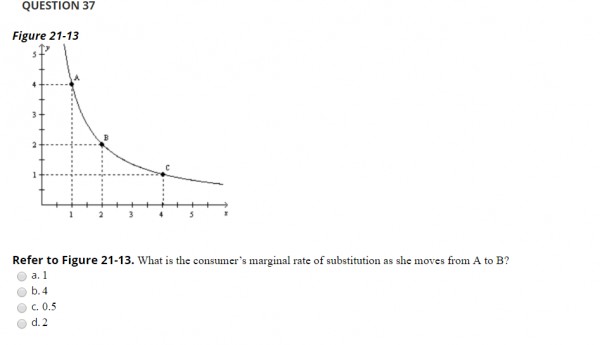When workers move from one industry to another in response to demand changes, this is an example of
A. The decreasing investment in human capital.
B. Factor quality.
C. Factor mobility.
D. Capital stock.
Answer: C
You might also like to view...
Refer to Figure 21-13. What is the consumer’s marginal rate of substitution as she moves from A to B?

When demand is perfectly inelastic, an increase in price will
A) leave total revenue unchanged. B) increase total revenue. C) decrease total revenue. D) either increase total revenue or decrease total revenue, but it is impossible to tell which.
A world-renowned brain surgeon can type twice as fast as her secretarial assistant. Which of the following statements is true in this situation?
a. The secretary has an absolute advantage in typing. b. The surgeon should do her own typing to save money. c. The surgeon should fire the assistant and work weekends and evenings to stay up on her typing. d. The surgeon should spend her time doing brain surgery and allow her secretary to do the typing because the secretary has a comparative advantage in typing. e. The surgeon should spend her time doing brain surgery and allow her secretary to do the typing because the surgeon has a comparative advantage in typing.
A monopolist can sell 20 units a week at a price of $10 per unit. To sell 21 units a week, it would have to lower its price to $9 per unit. The marginal revenue of the 21st unit would be: a. $9
b. -$11. c. -$12. d. -$20.